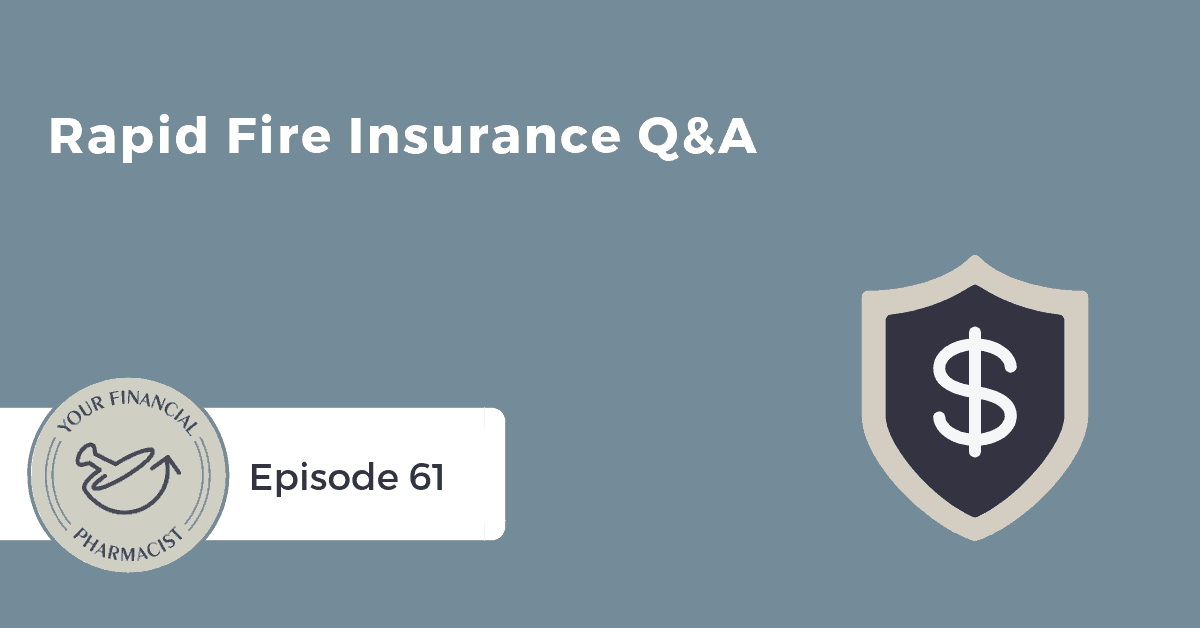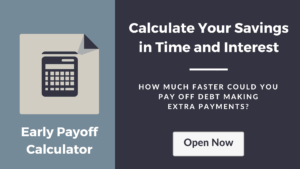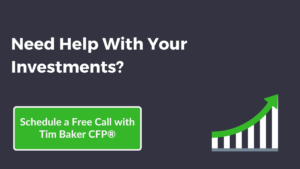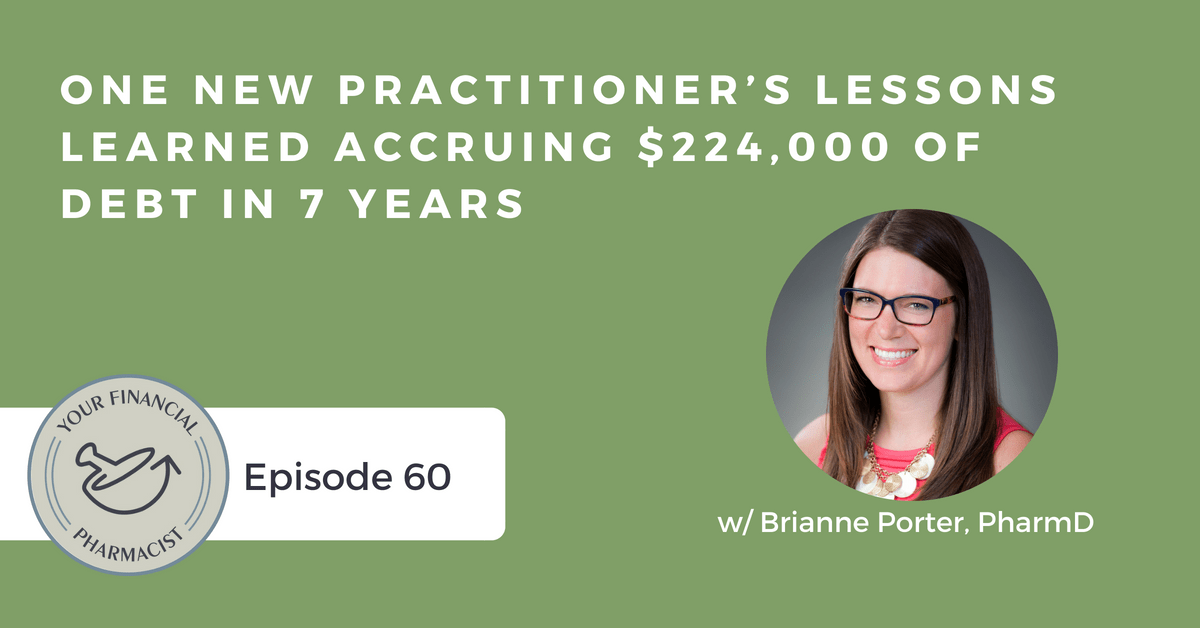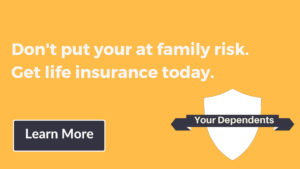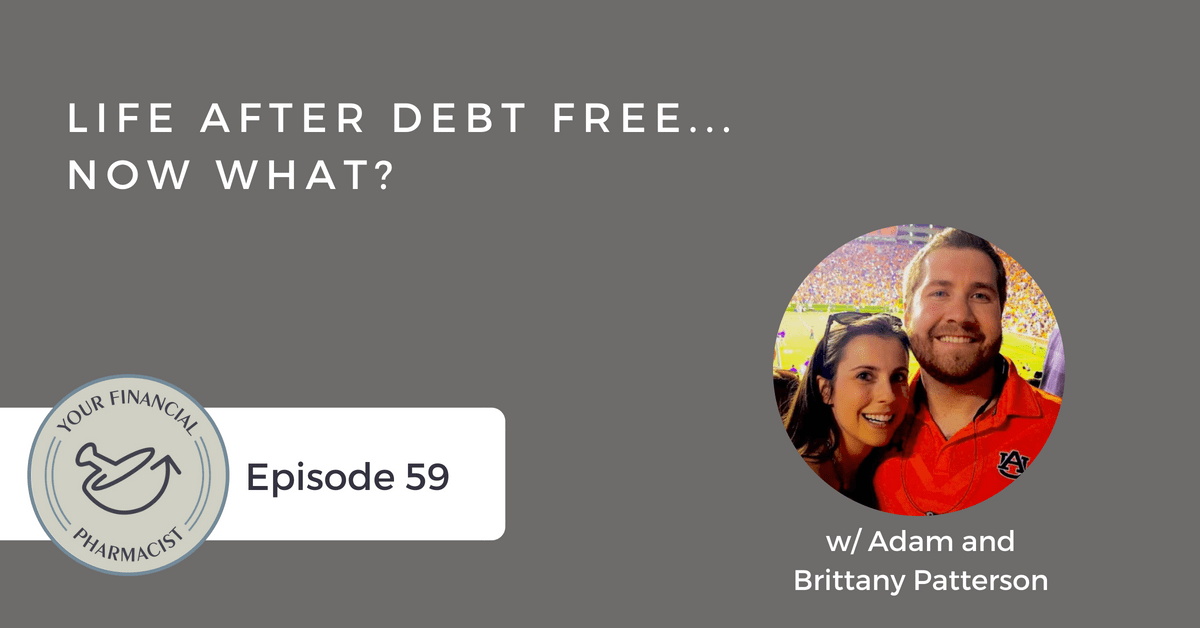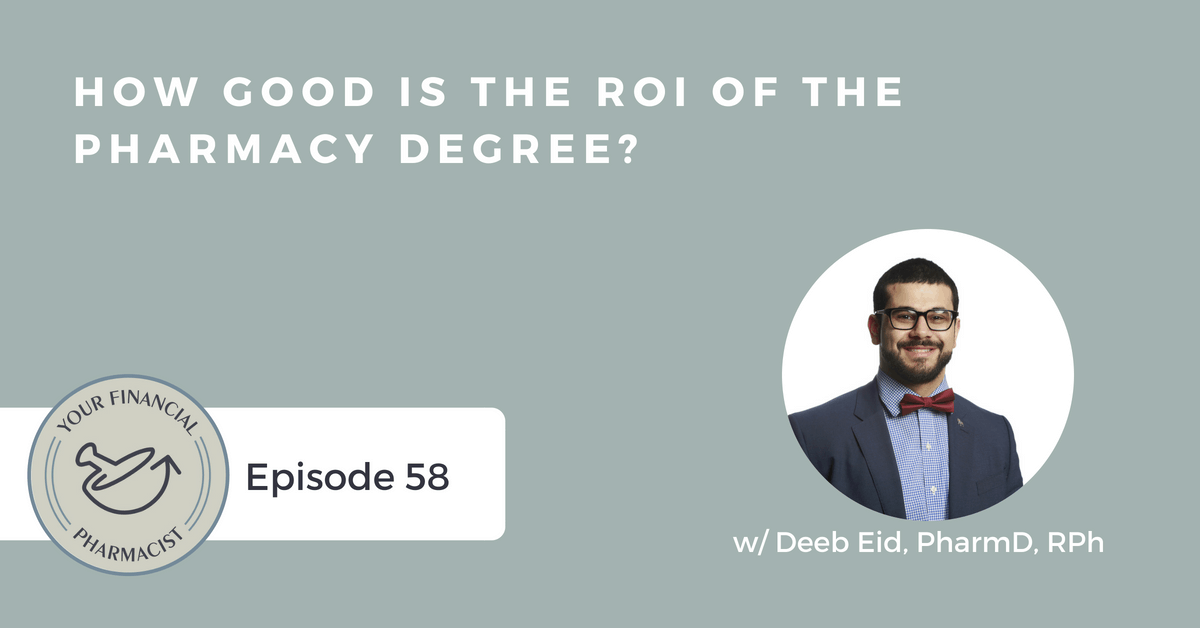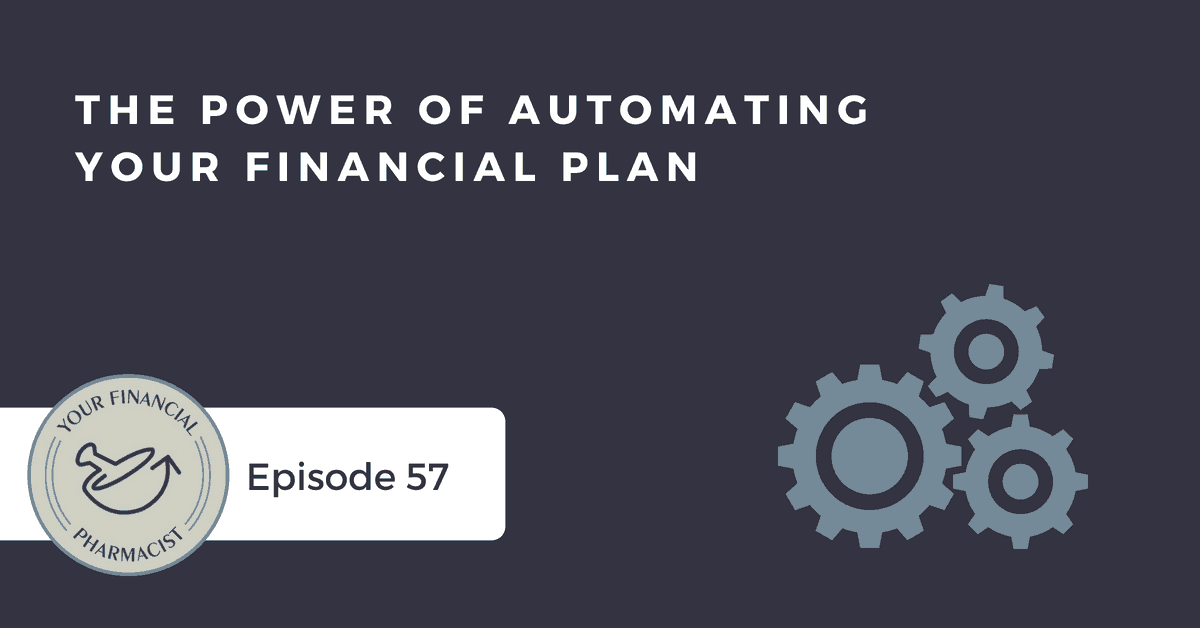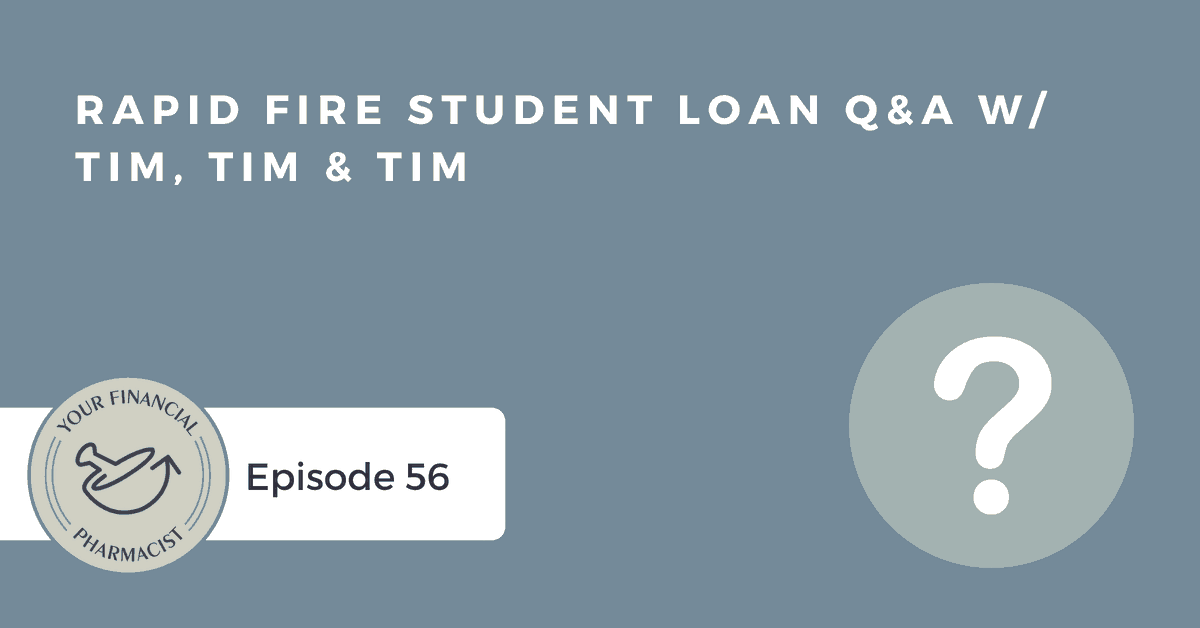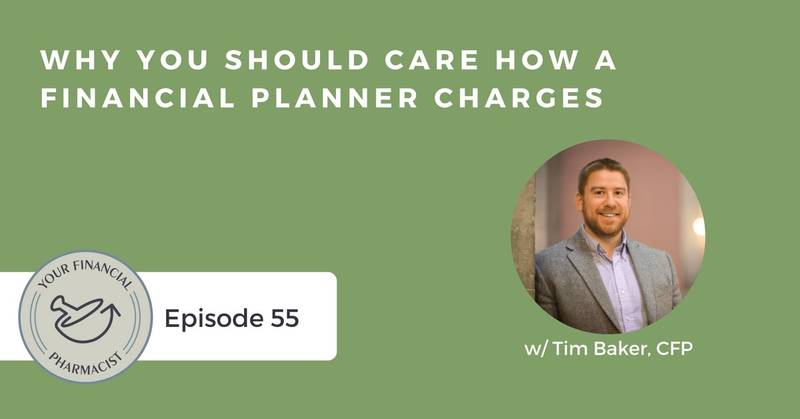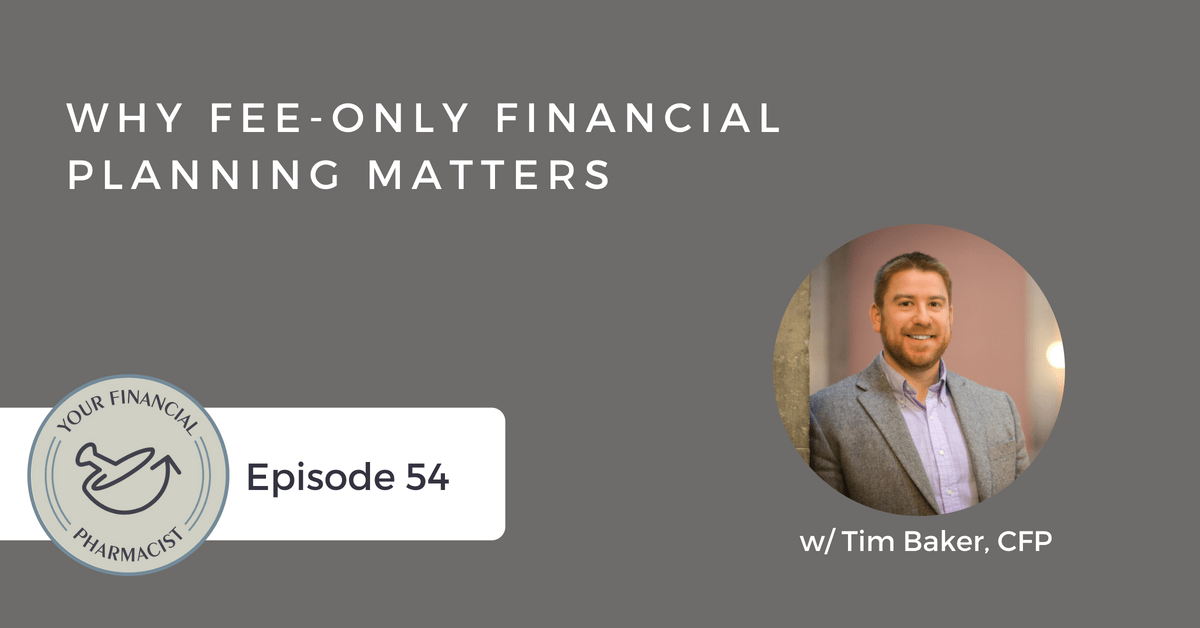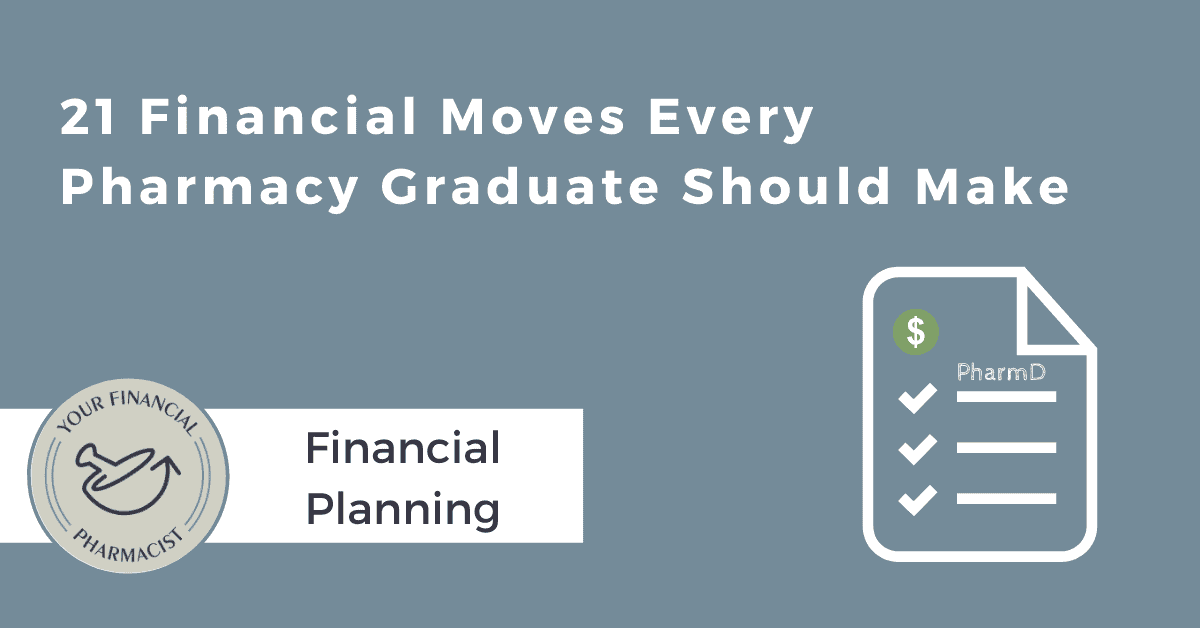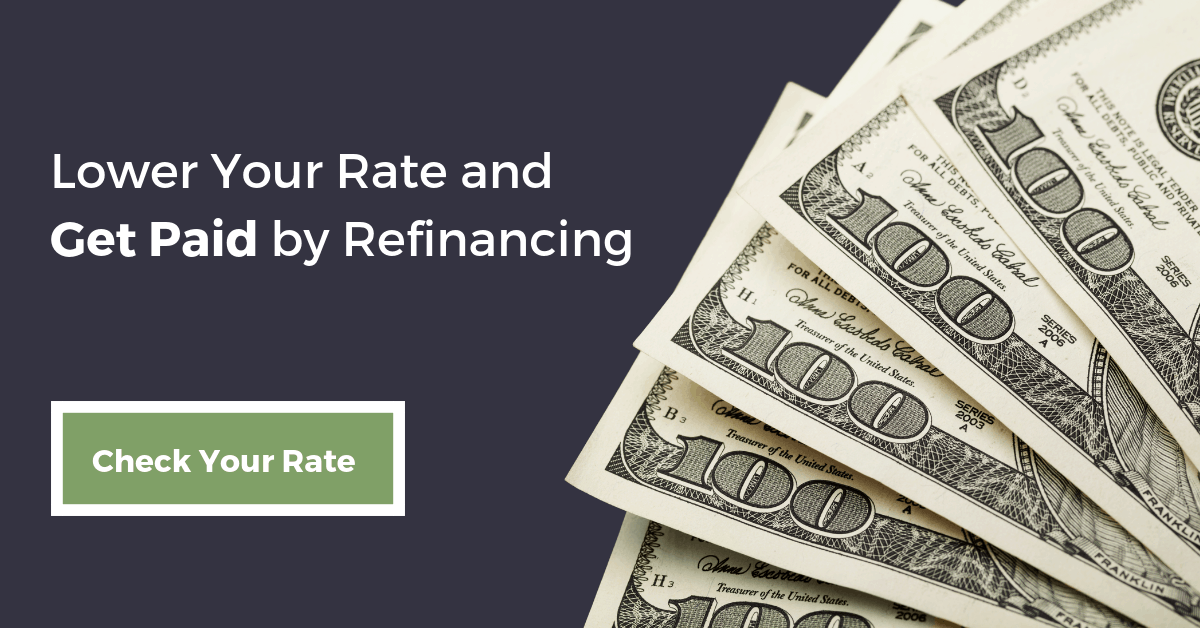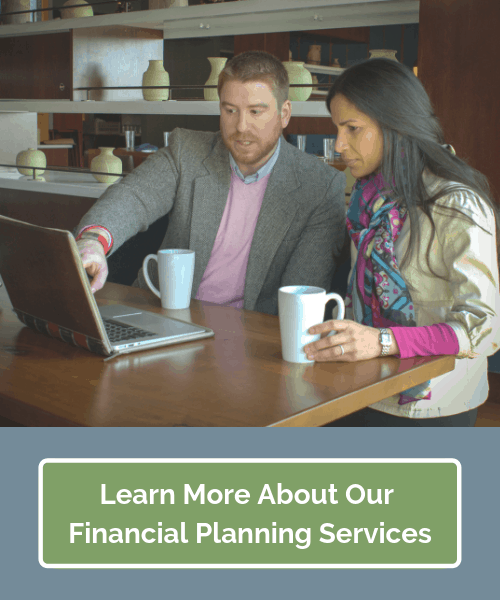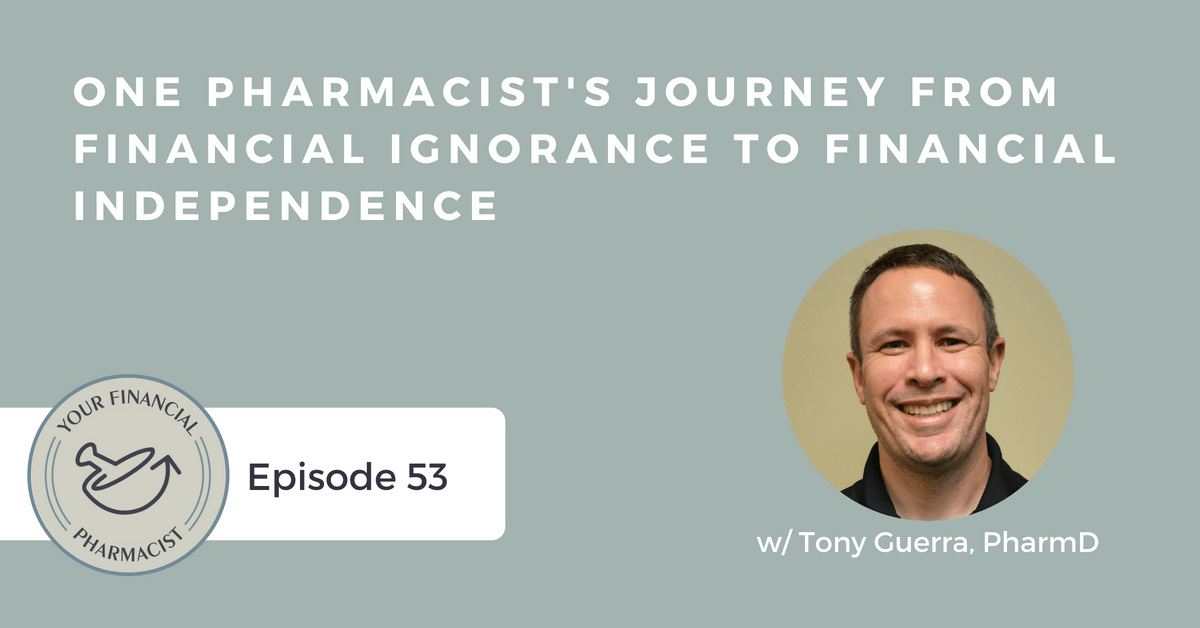On Episode 061 of the Your Financial Pharmacist Podcast, Tim Ulbrich, Founder of YFP, is joined by YFP team members Tim Church & Tim Baker to field insurance questions posed by the YFP community via the YFP Facebook Group in a rapid fire format. Whether it’s life, disability or liability insurance, having the right amount, not too much and not too little of insurance protection is essential to your financial plan.
Mentioned on the Show
- Policy Genius
- YFP Episode 056: Rapid Fire Student Loan Q&A with Tim, Tim & Tim
- YFP Episode 044: How to Determine Your Life Insurance Needs
- YFP Episode 045: How to Determine Your Disability Insurance Needs
- YFP Facebook Group
- YFP Life Insurance Guide
- Seven Figure Pharmacist by Tim Ulbrich, PharmD and Tim Church, PharmD
- Pharmacists Mutual
- HPSO
- APhA
Episode Transcript
Tim Ulbrich: Tim and Tim, welcome. Here we go, rapid fire insurance questions. You guys ready to do this?
Tim Baker: Let’s go.
Tim Church: Let’s do it.
Tim Ulbrich: Awesome. First things first, and I’m not going to sing “Happy Birthday” on the podcast, that would be embarrassing.
Tim Church: Why not, Tim?
Tim Ulbrich: I have a terrible voice, but if you absolutely demand it, we will do it. But it is Tim Church’s birthday! And he’s here recording a podcast, so happy birthday to Tim Church. Sincerely, we mean that. We appreciate all that he brings to YFP and the community. We appreciate his dedication, and so Tim, happy birthday.
Tim Church: Oh, thank you. Appreciate it.
Tim Ulbrich: I mean, what else would you want to be doing besides answering insurance questions, right?
Tim Church: Well, it’s kind of like deja vu because it’s been like, I remember a year ago, and I think it was on my birthday, you guys conned me into jumping in on the podcast.
Tim Baker: Is this like a birthday tradition? How does Andrea let you get away with that?
Tim Church: I guess because we had to both work in the morning, so you know, I’m off the hook and kind of can make it work.
Tim Ulbrich: That’s probably her quiet time that she appreciates and lets you off to record. So let’s do this. We’re going to do rapid fire Q&A all about insurance — life, disability, professional liability, and if you remember back in Episode 056, we did something similar related to student loans. And I would also reference listeners back to episodes 044 and 045, where we talked about life and disability in much more detail than we’re going to get to tonight even though we’re going to talk about those two topics specifically. So make sure to check out those two episodes. So the format, if you haven’t joined us before in Episode 056, I’m going to do the easy work. I’m going to punt the questions. Tim Baker and Tim Church are going to do the hard work. They’re going to answer the questions. And we’re going to get some feedback from the YFP community. And these questions come directly from the YFP Facebook group. So if you’re not yet a part of the YFP Facebook group, check it out. We’d love to have you a part of that community, and we’d love to have you featured on a future episode of the show. So Tim Baker, Question No. 1 comes from Zach in the YFP Facebook group. He says, “Which life insurance option should I choose? Term life or whole life? I think the right answer is term, but I’m not positive. Also, should I purchase it individually or through work? Through work is a lot cheaper.” So Tim Baker, life in terms of term or whole life and where to get it purchased, what are your thoughts?
Tim Baker: Yeah, so I think we’ve documented pretty thoroughly, I think that we’re big proponents of term versus whole life. You know, when I work with clients, I typically say that I feel — this is my opinion, I think this is the Tim, Tim and Tim opinion is that I think that whole life is generally better for the person that is selling it to you than the person is purchasing it. And we kind of take a mantra that we, you know, you buy term and then invest the difference. So to kind of give you a sense of what the difference is is I was on Policy Genius, which is the partner that we use to help our YFP audience with their solutions, insurance solutions, and this is what I use with clients. And before we started recording, I quoted a $500,000, 30-year term policy for a healthy 30-year-old, and it’s kind of the rule of 30. It’s about $30-35. That same $500,000 policy for whole life insurance is about five times more, it’s north of $160 per month. So I think the problem with whole life is that it can be complicated, it can be confusing, it’s not necessarily transparent, although there is a cash — so the big difference is one is pure insurance, term, it covers you for a term, a length of time. The other is whole life, it covers you for your whole life. And there is both an insurance component and like a savings or an investment component. And I think that whole life is typically, you know, I think it has lots of fees and you know, it’s not as transparent as I think I would want it to be. And I’ll probably get a lot of people that disagree with me and think whole life is a good solution, but I typically that for most of our listeners and for most people out there, term is a much, much better fit. From the perspective of should you buy individually or through work, I think one of the problems that I see often is that there is this insurance inertia, same thing when you have a 401k inertia. And what I mean by that is, you know, if your employer says, “Hey, we’ll match 3%.” Then you put your 3% in to get your match, which is great, but then five years later, you’re still at 3%. The same thing can be said about insurance is that most employers will say, “Hey, we’ll insure you 1x or 3x your salary,” or whatever it is, and you can buy up a little bit. That’s typically not going to be enough, especially for pharmacists in terms of what you actually need. So although a group policy is there and is a nice little benefit, for the most part, by and large, especially when you have kids or you have a house, things like that, you’re going to need a lot more insurance outside of what the employer gives you as a baseline. Now, I am a big proponent of buying individual policies because it’s portable. You can take it with you. And if you lock in a policy at 30 years old versus when you’re 45 and leave your job or 50, the policies are going to be a lot different in terms of the premium that you’re paying. So a lot of factors there. And typically, I know Zach, you said the group is cheaper. That’s typically not been my experience. Typically, if you’re a younger professional, you are typically paying a premium for your premium to kind of account for the older population that is in your group, whereas if you’re a younger professional, you’re going to pay a little bit less of a premium because you’re younger, you’re healthier. So I know that’s kind of a lot of moving pieces to that question, but to kind of sum it up — term, buy an individual policy because it’s portable. And yeah, just go from there. And obviously, be more — you probably need more than what the employer gives you, anyway.
Tim Ulbrich: Yeah, and Tim Baker, I wonder too if the purchase he’s referring to at work being cheaper is probably likely because it’s a much smaller amount of coverage, like you alluded to. So I know here at the university, I think we get one or maybe up to two times annual income but a max of $100,000. So you know, I’m wondering if there’s an apples to oranges comparison there where, as you mentioned, $500,000 policy or in my case, as I have documented in other episodes, $1 million policy, about $38 a month, versus $100,000-200,000 policy, obviously, the price difference per month may look very different. But the amount of coverage could also be very different. So it seems, as we talked about on Episode 044 in terms of how to determine your life insurance need, it seems to me this topic of term versus whole life is probably one of the most contested, emotional debate or whatever you want to call it, second only to the should I be paying down my debt versus investing? So lots of opinions on this topic. And one last thing I would add here is that I think for many listening to this show, we know that many of our listeners are recent graduates, new graduates, within 10 years or so of graduation. Often, we have so many competing priorities that being able to have that coverage that you need but being able to free up as much cash as possible to achieve other goals, we think is critically important, which obviously favors the term life side of the argument. OK. Good stuff. Tim Church, question from Anna in the Facebook group, “How long of a life insurance policy should I get? Is it most beneficial to get a 30-year policy?” And so she referenced that she’s currently in her 30s with young kids. What do you think?
Tim Church: Well, I think it kind of goes back to first off, are you in the term or the whole life camp? So go back to the question that you asked Tim Baker. But if you kind of agree and say, “OK. I’m in for term,” well, with term life insurance, you have to actually choose a term over which you’re covered. So you may have an amount in mind in terms of how much you want to have covered in the event of your death but over what period of time? And it’s really subjective to your specific situation, and I’m sure we’ll probably say that about 18 times on this episode as we kind of do on all insurance-related episodes. But really, the main question is is how long is it going to take you until you’re self-insured? I.e., how long is it going to be until no one is actually relying on your income or that you’ve accumulated so much wealth that no one is dependent on you making an income? And also, it could be how long do you want to work for? And how long do you expect to work for? So if you look at some of those big-cost items, so if you have kids, thinking about kids’ college, dependent on your income about future expenses, any debt that would be inherited by a spouse or family member such as a mortgage, so over what period of time are you going to need that coverage in place? So I think those are some of the questions that are really important to ask when you’re trying to figure out that term. Now, practically speaking, most insurance companies — and if you look on PolicyGenius — really, they’re going to go anywhere from 5-30 years. Thirty years is sort of like the maximum amount of time that they’re going to let you go with any policy. Now, some people get a little bit fancy. So they pick a policy for 20-30 years and then a couple years later, they layer on top of another policy to kind of get them an extra couple years or a little bit later into their retirement age. So there’s a lot of different ways you can go about it, but I think kind of a general rule of thumb is how long is it going to take you to become self-insured. And for a lot of people, that’s going to be into the retirement age.
Tim Ulbrich: Yeah, and I think this question really gets to the fact that you can’t buy life insurance in a vacuum, right? So Anna’s asking the question around length of policy, she mentioned she’s in her 30s, she’s got young kids. You alluded to things about when would you be self-insured, which obviously goes to components like how are your retirement savings going? How is your debt repayment going? What other debt do you have? Do you have a mortgage? Do you not? What are your goals? All types of things, so I think that further highlights the importance of comprehensively looking at your financial plan, not just looking at insurance as one component but as really a broader conversation related to all parts of your financial plan. So Tim Baker, continuing on here, Brian, a very active member of our Facebook community, asks, “How much life insurance is suggested for a stay-at-home spouse? General rule of thumb is 10-12 times annual income, but that doesn’t really apply here.” And then Dalton follows up to say, “It’s a great question. I’ve heard about $250,000-400,000 but curious to see the team’s opinions.” What do you think, Tim Baker?
Tim Baker: Yeah, I know Brian. So shoutout to Brian and Leah in Ohio and their son Nathaniel. So yeah, I think this is a tough one because you know, there are a variety of ways to calculate life insurance. I kind of subscribe to the Keep It Simple, Stupid method, which is, you know, roughly if you go by the old adage of 10-12 times income. I think more or less, you’ll be OK. But I think with some of those kind of if you have, you know, one spouse that doesn’t work or, you know, if there are, you know, kids or you have different goals with respect to college or if there’s a special need or something like that, I think breaking it down a little bit further. So the two main avenues that you can go down are let’s call it the Financial Needs calculation, which this method basically evaluates income replacement, lump sum needs, accounting for inflation and things like that, examines recurring expenses and, you know, some variables to consider would be things like final expenses, what the outstanding debts would be that maybe not be forgiven upon death and disability. If and what you want to provide for income to survivors. So if there’s, like I said, education or special needs that we need to account for with the, like again, with the marital status is and the roles of the spouses, size of the family, that type of thing. So that’s more or less one calculation you can go through. The other one is called a Human Life Value, and this is more or less a time value money calculation that uses income throughout what would have been the remaining work life expectancy. So you essentially take out the person that you’re insuring, you basically project what their income would have been, and you kind of discount what their consumption would have been in the household. And then voila, you have your calculation. So in this case, I probably would go through both and then probably with more of an emphasis on the financial need, the first method that I calculated that said, OK, in this case, in Brian and Leah’s case, if Leah decides to go back to work more full-time than she is now when Nathaniel is grown up, like what does that look like? You know, what are your thoughts on having a part of the life insurance benefit go to completely pay off the home mortgage or go to completely fund Nathaniel’s college? So there’s a little bit of wiggle room and gray area, and ultimately, what we’re trying to kind of come up with is a number that, hey, if someone were to pass on, we can then take that money and invest it and have a level of life that makes sense. Now, just to kind of flip that switch with the stay-at-home spouse, from Brian’s perspective, obviously he’s going to be on the road, traveling, working, and things are going to change. There will be an adjustment period if that were to happen, God forbid. But, you know, as lots of families with young kids know that that both work, daycare and child care services are hugely expensive. So I think that, again, we would look at the cost of daycare from basically the age of the kids to kind of college age and then provide some type of benefit to cover that in the event that the stay-at-home spouse was, you know, to die prematurely. So there’s not — unfortunately, there’s not, you know, just like Tim said, it’s not kind of a one-size-fit-all. I think basically, sitting down and asking tough questions — because again, like a lot of my, if I say, “Hey, what do you want to allocate for final expenses?” people look at me like I have three heads. It’s just not something that we think about. So like I’ll provide some guidelines and some left and right limits in terms of that, and then we kind of just build that into the calculation and then go forth, get a quote and get a plan in place. So stay-at-home spouse is a little bit tricky. Again, not a great rule of thumb out there, but I think ultimately, there’s a — sitting down and kind of backwards planning into a number makes the most sense.
Tim Ulbrich: Yeah, good stuff. And a shoutout as well to Brian and Leah. Leah actually is a graduate of NEOMed. Go Walking Whales. Tim Church, also a graduate of the great university that is NEOMed, so excited to have them a part of the community. And this one hits home for me. I know Jess and I really hadn’t thought about life insurance in terms of her being a stay-at-home mom. And that came up as a topic, and all of a sudden, we were asking ourselves, what expenses would arise in the event that she were to be unexpectedly pass away? So I think this is a good topic for everyone to be thinking about. And we ended up landing on $400,000. But obviously, as you mentioned, there’s certainly not one size that fits all here. I would also reference our listeners, we have two great guides and pages on life insurance and disability insurance. So if you’re ever talking about life insurance, if you go to YourFinancialPharmacist.com/lifeinsurance, a great guide that will help you walk through and answer some of the questions that we are talking about here tonight. Tim Church, this is a loaded one regarding disability insurance, and this gave me actually flashbacks to us writing the book, when we were digging in and trying to decipher the code that is disability insurance. So Dalton asks, “I feel like I know very little about disability insurance, even less about professional liability. So it would be great to know how much is needed and what’s a reasonable amount to pay for it.” So we’re going to talk about professional liability here in a minute, but talk to us a little bit about basics of disability insurance and what our listeners should be thinking about.
Tim Church: Definitely. Well, disability insurance is really income insurance. It’s protection to guarantee yourself an income if you can’t work because of an accident or an illness. And I think a lot of people, they have this feeling, especially people that are young starting out in their careers that they’re just invincible and that nothing bad is going to happen to them. And unfortunately, that kind of thinking can lead to a bad situation, as I’ve known — specifically known cases of people who have had debilitating chronic illnesses that have limited their ability to work full-time or part-time. I’ve known people that have gotten into car accidents, who’ve had head trauma and couldn’t work for an extended period of time. So if you think all about that it takes to become a pharmacist, all the time, all the energy, that this is really probably one of the most important insurances that a pharmacist should have because it’s really a way to guarantee that you’re going to have an income for whatever period of time that you become disabled. And you know, that kind of goes into how long should you have a coverage? Should you have a short-term disability coverage? Should you have long-term? And I think that obviously, again, it’s going to be situation-dependent. But if you expect that you’re going to work until you become 60, 65, then you really should have a policy that’s in force over that time period. And so when it comes to the actual amount, you have to ask the question, well, what could you comfortably live on or what kind of lifestyle do you want? And that’s an interesting way to look at it, but that’s really what it comes down to. So if you’re someone that says, I really want to maintain my same standard of living that I’m doing right now, then you probably need to go up to the max of what insurance companies are going to allow you to have, which is about 60-70% of your gross income. And if you think about that 60-70% of your gross, that’s really pretty close to what you’re getting paid net anyway when you think about taxes and other deductions that come into play. So if you’re trying to replace basically most of the income that you’re going for, then that’s a percentage that you would kind of look at. Now, you may be someone to say that, well, if I couldn’t work, maybe I don’t need to have my same standard of living and I would be OK with a lesser amount. And certainly, that’s an example of one of the routes that you could go. Now, one of the things that you mentioned about the book, Tim Ulbrich, is just thinking about how complex these policies are. I mean, when you think about a term life insurance policy, it’s pretty straightforward. You choose a term, you choose an amount, and there you go, right? But when it comes to disability insurance, you have these basics in place, but then you have all of these other bells and whistles. So in the policies, they call them “riders.” And so it can make it very, very confusing, very complex, and it’s almost like you’re buying a car. Like they have all these upsells and things that they’re trying to get you on. Now, some of them are kind of standard in policies. But when you look at what the cost breaks down and how do they come up with a cost for you, really going to be based on some personal details: your age, your health history, the benefit period, so how long you want that coverage. Like I said, for most people, probably going to be up to retirement age. And then also something called the elimination period. And this is basically the time it takes for when you would make a claim that you are disabled until you would actually start getting payments in the mail, you’d start getting a check and getting payments. So the longer that elimination period, the cheaper your policy’s going to be. So if you say, “I have enough emergency fund or enough savings to wait until six months between making a claim,” well then, you would have an elimination period of that length. And basically, you’d be able to cover yourself until that period. And then some of the other things that kind of break down and go into that are some of those riders that we talked about, so something called own occupation, meaning that if you can’t work as a pharmacist, you’re going to get that income every single month, not if you can do any occupation or any meaningful work. So those are something that I think is really important. And then when you go into looking at the cost, again, because there’s so many variables into play, it’s hard to say, you know, what is a good amount? What’s a reasonable amount? But I will give you an example. If you look at someone who’s 25, so around the average age of someone who’s graduating as a traditional student, and they’ve got coverage until age 65, 60% of their income they’re trying to replace within a 180-day elimination period, that’s going to cost around $120-160 a month. And a lot of people may be looking at the number and say, “Wow, that’s a lot higher than life insurance and possibly even health insurance and other things.” And it is. It’s true. If you want kind of a very comprehensive type of policy, it’s going to be a little bit pricier than other things. But again, at the end of the day, you think about all the time and all the effort that you put into become a pharmacist, what are you going to do if you can’t work for a period of time? If you get in an accident, if you become disabled because of an illness, what are you going to do? So again, I think it’s so important. And one of the ways to kind of look for, shop multiple companies, again, is checking out PolicyGenius, and you can do that on our partner page. And that’s at YourFinancialPharmacist.com/insurance. Wow, that was a mouthful, Tim.
Tim Ulbrich: No, that was the Cliff Note version of disability insurance that I wish I would have heard 10 years ago. That was great. And I think, as you mentioned, very complicated topic. And I’m going to issue a call to action to our listeners because I know there are lots of people out there that need adequate life and disability insurance protection that don’t have it in place. So if you’ve heard this night — and obviously, this is just scratching the surface — head on over to the website, learn more, check out the free guides, evaluate what type of coverage you need, and then, as Tim mentioned, you can check out the PolicyGenius site to get going there and get learning more about this topic as well. So also, I’d reference Chapter 7 of the book, “Seven Figure Pharmacist.” We talk about this in great detail, and you can get that over at TheSevenFigurePharmacist.com. OK, two questions we have about professional liability insurance. So Tim Baker, the first question comes from Tyrell. He says, “Should I carry my own professional liability policy on top of whatever my workplace provides?” What do you think?
Tim Baker: Yes. So a professional liability policy is definitely something that you’re going to want. And I think given the cost of said policy, it’s really a smart move. I think they’re almost negligible in terms of what you pay for the year. Typically, if you’re a pharmacist, you want to protect yourself. Typically, the policies that are issued through employers will mainly protect the employer. So this would be to protect yourself if you’re individually named in a lawsuit or if your employer doesn’t have the proper coverage in place to protect you or if you have a second job, if you’re side hustling, or if you kind of give advice outside of your employer, these would be things that would be covered under your own policy. So they say, some of the studies show that 75% of claims against pharmacists is wrong drug, wrong dose. So some of the things that would be covered would be things like that kind of overarching professional liability, things like license protection, defense attorney, those kind of things that are super important, you know, just like Tim Church was talking about with, you know, the disability policy. This is your really protection against your ability to make a living. Pharmacists spend lots of time and money and blood, sweat and tears to get the PharmD, get on to the world, and these are, you know, these are these protection mechanisms that are in place to make sure that you are defending your income and your overall balance sheet. So you know, I know that Pharmacists Mutual, the clients that I work with will look at that or HPSO, I know has an agreement with our partner, APhA, so these are all places that I would look and make sure that, you know, you have that policy that’s portable to you that you’re paying for and provides you coverage that you need.
Tim Church: And like you said, Tim, the cost is really negligible. We’re talking for most policies, they’re going to be like $150-300 a year. So it’s really, really cheap for the coverage that you get. And it’s pretty easy to get these policies. It’s kind of an all or nothing. A lot of the other insurances we already talked about, you have to pick a lot of different variables and things that you want, but these with liability insurance, it’s pretty much all or nothing. And most coverages give you about $1 million worth of liability per claim, then somewhere around an aggregate of $3 million for as an annual limit. So I think for most part, it’s pretty much a no brainer to have.
Tim Ulbrich: Yeah, one thing I would add too to the discussion is that the role and scope of practice, depending on the state that you live in, is evolving quickly. So I think as the role of the pharmacists continues to expand — you know, here in Ohio, we obviously have an expansion of collaborative practice agreements, which means now essentially, we’re able to prescribe without using the word ‘prescribe’ in our state laws. But obviously, that’s going to add additional opportunities where that liability protection is going to be needed even more. So I think for the cost and what that provides, I think it’s critically important. And I know here in Ohio, I’m sure other states are experiencing, you know, the rules associated with the laws that the board is governing are evolving very rapidly, by the week, sometimes by the day. And so being able to stay up with those and make sure you’re practicing according to the law, I think is becoming more difficult, which validates the need for that insurance even more. Tim Church, Kristin asks — this is a good question — from the VA here, “If you work for the VA, do you need to carry professional liability insurance?” What do you think?
Tim Church: It’s interesting. I asked the same question when I first started, and I think a lot of people have this question. Well, when I looked into this a little bit more, that VA employees are federal employees, they have this extra protection through the Federal Tort Claims Act, and so when you’re functioning within your federal scope of practice, it does provide a level of immunity from personal liability damages, so if you have any malpractice or negligence, if you’re working under your scope or within your scope. So I think that you definitely get an extra layer of protection. I think where it can get fuzzy is if you’re functioning within that scope, and if there’s any way that possibly you could be told or determined that you’re not within that scope. And the other thing I would say too is there’s always going to be opportunities to work somewhere in addition to the VA or if you’re going to give verbal advice like Tim Baker mentioned. So I think that in general, if you want that extra layer of protection, it just kind of makes sense. Is it absolutely necessary? Probably not if you’re solely going to be practicing pharmacy within the VA and that’s it. But again, kind of go looking back to the cost and the benefits that you can get, I think it’s just a great buy in terms of what you get in exchange.
Tim Ulbrich: Yeah, just don’t get Crazy Uncle Joe any drug advice, right? Outside of work. And it’ll all be OK. So I think take-home point here, professional liability, get it done. For what it costs, it’s good protection, good coverage, thinking of that also alongside disability in your life. So Tim Baker, last question we have here from the YFP Facebook group comes from Shaveida — and I apologize in advance if I butchered your name. Let me know, we’ll get it right next time. She asks, “My employer advertises long-term care policies.” And she says she doesn’t know much about it. So talk to us briefly about long-term care. We haven’t talked much, I think if any, about it on the podcast or even on the blog. What is long-term care coverage? And who should be thinking about it?
Tim Baker: Yeah, and I would say full disclaimer, I’m not a long-term care insurance expert. I know, typically this is coverage for individuals, you know, basically as they become seniors where you pay an annual premium in return for financial assistance if you ever need help with kind of those day-to-day activities like bathing and dressing and eating meals, maybe toileting, those types of things. And most of my experience with long-term care insurance is from my last firm where a lot of our clients were more kind of approaching retirement and in retirement. You typically don’t buy these types of policies until you’re in your late 50s, early 60s. And they’ve had kind of a checkered past. So back in the ‘90s, there were probably more than 100 insurers that issued these policies. And I think today, it’s less than 20 that actually do because of a variety of underpricing policies and premium spikes and just insurers going out of business. You know, typically, what I saw in that space in my last firm is a lot of people electing to let the policies lapse because they just became too difficult to manage and really self-insure. Now, there’s a lot of risk there because, you know, I read a stat that someone retiring in 2015 will spend I think $245,000 on medical expenses kind of outside of Medicare. So it’s going to be a large part of, you know, the future of retirement planning. How do you self-insure versus long-term care insurance? So you know, like I said, most of my clients are kind of in the 25-45 range, so it’s not something that necessarily I look at day-in, day-out. I know that overall, it can kind of be expensive and difficult to price and project. But I think, again, as my client base ages, it’s just something that we have to look into and see how to really approach that part of the retirement plan.
Tim Ulbrich: Good stuff, Tim and Tim. This has been fun. We’ve got more of these coming. We’re going to do rapid-fire Q&A’s on investing, home buying, other topics. We’d love to hear from you. So again, if you’re not yet a part of the YFP Facebook group, come on over, join us, ask your questions, and we’d love to feature it on a future episode of the YFP podcast. So on behalf of the team, that’s all for today. And we look forward to joining you again next week. Have a good one.
Join the YFP Community!
Recent Posts
[pt_view id=”f651872qnv”]

